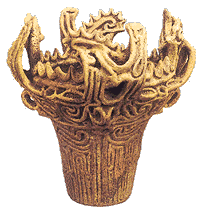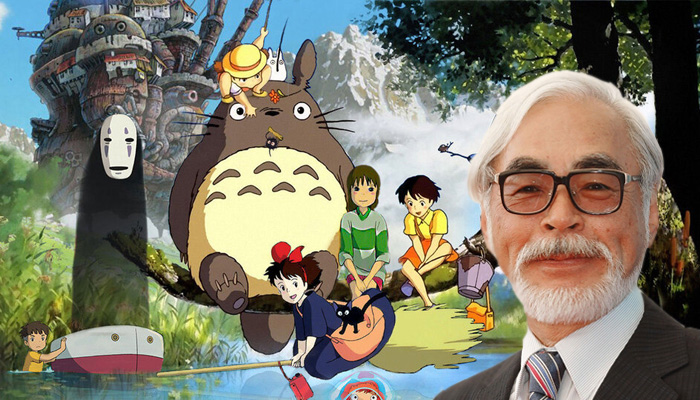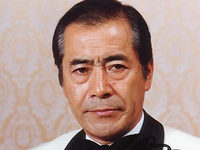HISTORY OF CERAMICS OF JAPAN
 The discovery of archaeological sites with ceramics of about 13 thousand years old on the Japanese islands in the early 60s was at that time a real world sensation, refuting the popular belief that the Middle East was the center of the earliest pottery. Today, ceramic complexes aged 13-10 thousand years are known not only in Japan, but also in the south of the Russian Far East, in eastern and southeastern China, in Korea.
The discovery of archaeological sites with ceramics of about 13 thousand years old on the Japanese islands in the early 60s was at that time a real world sensation, refuting the popular belief that the Middle East was the center of the earliest pottery. Today, ceramic complexes aged 13-10 thousand years are known not only in Japan, but also in the south of the Russian Far East, in eastern and southeastern China, in Korea.
1. ANCIENT CERAMICS. The oldest pottery in the world was first discovered on the Japanese archipelago. In 1960, during the excavation of a primitive site in Fukui Cave (Nagasaki Prefecture, Kyushu Island), fragments of clay vessels were discovered whose age, according to radiocarbon analysis, is about 13 thousand years. Most of the monuments are open in the central and southern parts of the island. Honshu, in the north of Fr. Kyushu. The oldest ceramic complexes of the most northern island of Hokkaido date back to about 9 thousand years. Samples of ancient Japanese ceramics are fragments of vessels that were probably used for some household needs. These products of the first potters were still very primitive. The molding material for them was natural clay, often poorly cleaned, containing coarse sandy impurities.
This is how early ceramics in Japan look like. Early ceramic vessels had a simple shape – with straight or slightly widened to the mouth walls, a sharp or flat bottom. In appearance, they resembled an inverted cone or cylinder. The sharp-bottomed vessels were intended for digging them into the ground or for hanging them over a fire with a rope threaded through holes located along the mouth. The walls of clay containers were only slightly smoothed out during molding and remained rough after firing. Ceramics were fired in an ordinary open fire, at low temperatures of 500 ° – 700 ° C.
The vessels had brittle walls and faded yellow or light orange color. A remarkable feature of the oldest ceramic pottery in Japan is that, with all its technological primitiveness, it is already marked by signs of decor. The vessels were decorated with a simple ornament of prints of a rope or cord, thin, sticky clay flagella, and nail impressions. An interesting decor option was the prints of the folds of small marine mollusks.
2. CERAMICS OF THE NEOLITHIC ERA. The Neolithic era of Japan is represented by the Jomon culture (from 10 to 2.5 thousand years ago). The Jomon culture is subdivided in time into several periods: initial, early, middle, late and final. Each is characterized by certain features of material culture, economy, social structure of society. At each archaeological site of Jomon culture, researchers find a huge number of whole and broken vessels. Collections of Jomon ceramics are an obligatory decoration of all historical and cultural museums in Japan.
As economic life becomes more complicated, technology and production, in particular, pottery technology, develops, a gradual process begins of identifying particularly skilled craftsmen who made ceramic dishes not only for themselves and their families, but also for the neighbors in the village, and possibly for residents other villages. The dishes of the initial and early Jemon were still very primitive in manufacturing technology and in shape – containers with straight or slightly expanding walls to the mouth, with a rough rough surface, burned in a fire at low temperatures.
Jomon, however, each piece was decorated with ornaments. The most common type of decor was prints of rope, with the help of which various patterns were created. Actually, the name “Jomon” itself comes from the Japanese word “jose”, which means “rope”, “cord”. Pottery decorated with rope prints has become a kind of hallmark of the Neolithic culture of Japan. This tradition, having emerged at the earliest stages of the history of Japanese ceramics, has been preserved for many millennia. Shapes of dishes become especially diverse during the late and final Jemon periods. Along with containers of a simple contour, vessels were made in the form of a vase with a rounded body and a high narrow neck, bowls and bowls were popular, and vessels with a tank-bowl on a foot-pallet appeared. Exclusive attention was paid to the decor of ceramic dishes. In the middle Jomon period, an original and unparalleled style in other parts of the world was born in the decoration of vessels with embossed details. Ceramics of this time is characterized by a combination of simple forms and complex, even elaborate decor. The upper, estuarine part of the containers was decorated with intricate patterns of clay tows, spirals, ribbons, rings. Sometimes in this composition details were interwoven in the form of stylized images of animals or human faces. Very often, sticky elements were also placed on the walls of vessels, previously covered with continuous rope prints. Researchers of Jomon ceramics distinguish the types of vessels “katsuzaka”, “atamadai”, “umetaka”, which are distinguished by a special splendor of decor.




